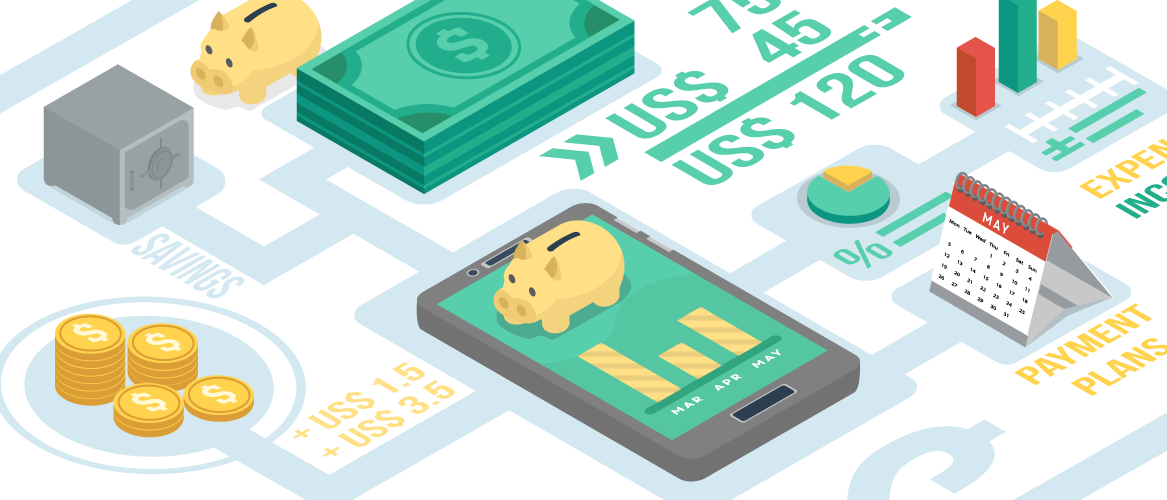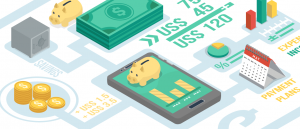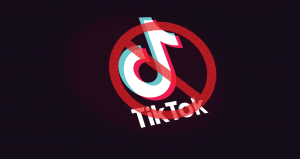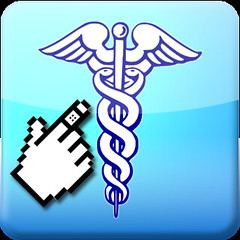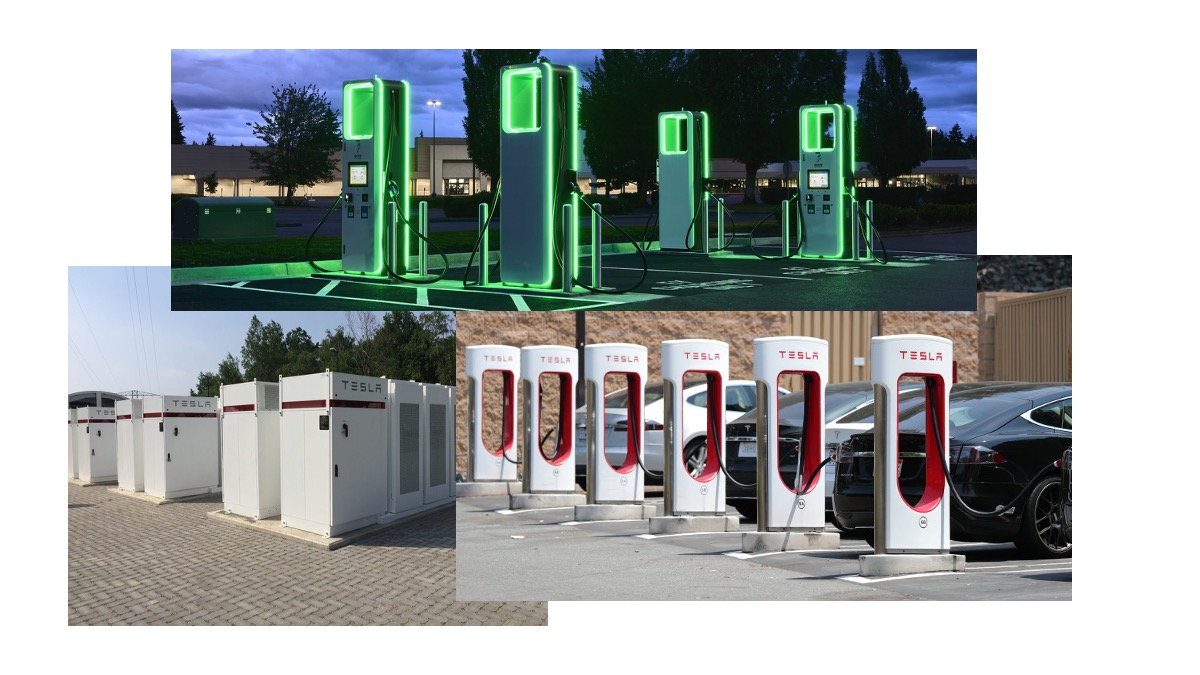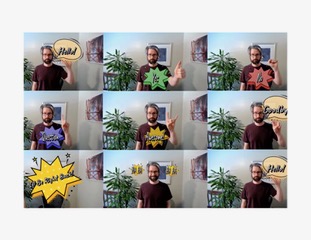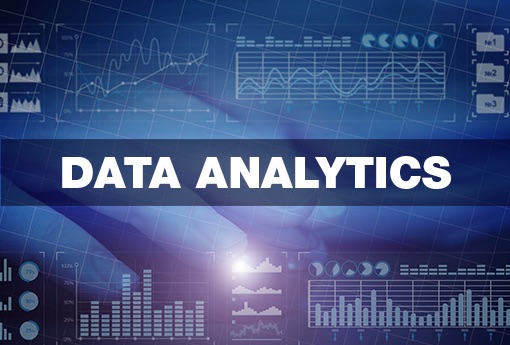By Kyle Durch
Transportation, even during a pandemic, is one of the most critical facets of a person’s life. Electric vehicles (EVs) are rising in popularity, and they improve lives in numerous ways.[1] Since the start of the COVID-19 pandemic, EV sales as a percentage of total new vehicle sales in the United States is at an all-time high.[2] Most EV owners enjoy charging their vehicles at home, spending far less money in electricity than they would have paid for gasoline in a similar combustion-engine-equipped vehicle.[3] But as the pandemic wanes, more people will seek to travel further distances with their EVs.[4] While fast charging exists to make these desires a reality, proliferation of charging options to meet rising demand is stifled in two key ways: (1) cost to provide energy through utility demand rates, and (2) time-based price structure for customers.
In order to understand the world of EV charging, some terminology must be considered.[5] First, a kilowatt (kW) is a measure of rate, or how fast electricity is transferred. A kilowatt-hour (kWh) is a measure of capacity, either in terms of battery capacity or in total energy transferred, defined by a kW in one hour. EV chargers exist in three basic types: Level 1, or 110 volt slow charger (1-2 kW); Level 2, or 220 volt moderate speed charger suited for home or work charging (6-17 kW); and Level 3/DC Fast Charge, or high-speed charging suited for enroute charging on long trips, or for owners lacking access to home charging (50-350 kW).[6]
In most states, EV charger operators may set prices “per kWh.”[7] This price structure enables transparency in two ways: (1) owners can compare the price they pay at these chargers directly with their “per kWh” home electricity rate; and (2) owners can predict the total cost of the charging session based on the kWh capacity of the vehicle’s battery, just as they would when purchasing gasoline or diesel, where the purchase is based on the gallons filled.[8]
On the other hand, some states require that EV charging commence on a “per minute” price structure.[9] If, like gasoline, the fill rate remained constant throughout a charging session, this price structure would be fine. But in reality, the charge rate changes dramatically throughout a session.[10] To compensate, operators offer varying prices for ranges of charge rates.[11] Even so, each minute of charge becomes more expensive as the charge rate slows and less energy is actually transferred.[12]
Further complicating the charging station operator’s perspective is the utility’s demand rate. While residential customers generally pay a fixed price for each kWh consumed, larger consumers of electricity—such as commercial and industrial users—are charged a fee for the rate (or speed) of electricity that they consume.[13] This scheme is especially problematic for DC Fast Charge operators, where each vehicle connected can pull anywhere from 100 kW to 250 kW or more.[14] Such high loads result in significant added fees that challenge the ability of operators to break even, let alone profit from providing service.[15]
Operators may mitigate demand rates through the use of large-scale battery systems installed at charging locations. Stationary batteries even out demand by drawing grid power at a continuous rate; the battery charges at a set rate when no vehicles are attached (until full), and it either reduces its own rate of charge or discharges to connected vehicles to serve the excess demand.[16] The net result is a constant demand on the grid regardless of whether, and how many, EVs are connected. This removes uncertainty caused by the random nature of vehicles connecting to charge. In turn, reducing the overall demand rate avoids cost to charger operators and stabilizes prices for EV owners.
But on-site batteries do not address the price structure available to EV owners. In jurisdictions that restrict charger operators from charging “per kWh,” an operator must charge a “per minute” rate that estimates its energy cost plus some return on investment, and might provide incentive for EV owners to minimize their time at the plug to make room for others.[17] Operators may estimate low or high, depending on their revenue goals.[18] At issue is transparency for EV owners: other than by comparing price with other charger operators, there is no objective way for an owner to tell whether an operator is exacting a fair rate of its customers.
The EV owner’s goal is to obtain a certain amount of driving range, which translates to number of kWh added to the battery.[19] Price “per kWh” translates immediately into the desired number of kWh required. By contrast, the “per minute” structure balances multiple variables outside of the EV owner’s control, such as rate-of-charge capability of the vehicle, actual charge rate delivered by the charger, and the utility’s energy and demand rates.[20] Since charge rate varies throughout the session, and maximum charge rate may depend on the energy available from the charger itself, the total time necessary to achieve the desired number of kWh is a mystery. These factors together render the EV owner’s calculation of total price impossible—prior to finishing the charging session.
Altogether, lack of simplicity in paying for fast charging on-the-go stifles proliferation of chargers by unnecessarily impacting the willingness of consumers to use them.[21] States that prohibit charger operators from using the “per kWh” payment model should remove that restriction in order to better protect consumers. Likewise, charger operators should invest in on-site battery systems, reducing their impact on grid demand and maximizing savings—benefiting both the electric utility and the EV owner. Investments such as these will encourage further expansion of charging infrastructure. This expansion will in turn inspire more consumers to switch to EVs, returning dividends in health and climate benefits.
[1] See Off. of Energy Efficiency & Renewable Energy, Electric Vehicle Benefits, Dep’t of Energy, https://www.energy.gov/eere/electricvehicles/electric-vehicle-benefits (last visited Sept. 18, 2020) (explaining that EVs “reduce emissions that contribute to climate change and smog, improving public health and reducing ecological damage,” as well as save time by eliminating trips to gas stations).
[2] U.S. Plug-In Electric Passenger Car Sales Hit 5.5% in January-April 2020, InsideEVs (June 1, 2020, 3:41 PM), https://insideevs.com/news/426383/us-plugin-car-sales-january-april-2020/.
[3] See Off. of Energy Efficiency & Renewable Energy, Charging at Home, Dep’t of Energy, https://www.energy.gov/eere/electricvehicles/charging-home (last visited Sept. 18, 2020); see also The True Cost of Powering an Electric Car, Edmunds (Mar. 6, 2019), https://www.edmunds.com/fuel-economy/the-true-cost-of-powering-an-electric-car.html (providing an explanation of the cost of energy and charging equipment, and how this paradigm compares to the cost of gasoline).
[4] See generally Roberto Baldwin, Post-Pandemic, You’re More Likely to Take More Road Trips, Car & Driver (June 6, 2020), https://www.caranddriver.com/news/a32784601/post-pandemic-youre-more-likely-to-take-more-road-trips/ (indicating that fear of flying with other passengers contributes to widespread plans to travel via road trip rather than by airlines for the foreseeable future).
[5] See Electric Vehicle Glossary of Terms, EV Safe Charge (2019), https://evsafecharge.com/ev-terms-glossary/.
[6] See How Does Electric Vehicle (EV) Public Charging Work, Electrify Am. (2020), https://www.electrifyamerica.com/how-ev-charging-works/; Supercharging, Tesla (2020), https://www.tesla.com/support/supercharging.
[7] See Charles Benoit, 30 States Allow kWh Pricing, but Non-Tesla EV Drivers Mostly Miss Benefits, Electrek (Aug. 12, 2019, 11:13 AM), https://electrek.co/2019/08/12/kwh-pricing-ev-drivers-miss-benefits/.
[8] See Paul A. Eisenstein, Public EV Charging Companies are Switching to More Logical Pricing Plans, Detroit Bureau (Sept. 16, 2020), https://www.thedetroitbureau.com/2020/09/public-ev-charging-companies-are-switching-to-more-logical-pricing-plans/.
[9] Jonathan M. Gitlin, Electrify America Switches to Per-kWh Billing in 23 States, ArsTechnica (Sept. 16, 2020, 11:27 AM), https://arstechnica.com/cars/2020/09/electrify-america-switches-to-per-kwh-billing-in-23-states/.
[10] See, e.g., Catherine Lane, Tesla Charging Stations: What to Know on the Go, SolarReviews (May 12, 2020), https://www.solarreviews.com/blog/tesla-charging-stations-everything-you-need-to-know (explaining that while Tesla Superchargers can charge to 80% capacity in just 40 minutes, the rate reduces thereafter protect battery health, resulting in another 35 minutes to reach 100% capacity).
[11] See, e.g., Pricing and Plans for EV Charging, Electrify Am. (2020), https://www.electrifyamerica.com/pricing/ (indicating two prices depending on the charge rate capability of the vehicle, effective where “per minute” prices are required, such as in Kansas and Georgia); Supercharging, supra note 6, at ¶ 2 (explaining two price tiers: one for any charging at or below 60 kW, and another for any charging above 60 kW).
[12] See Gitlin, supra note 9, at ¶ 3.
[13] See, e.g., Explanation of Demand Charges, Nw. Energy, https://www.northwesternenergy.com/docs/default-source/documents/E-Programs/E-demandcharges.pdf (last visited Sept. 18, 2020).
[14] See Dane McFarlane et al., Analytical White Paper: Overcoming Barriers to Expanding Fast Charging Infrastructure in the Midcontinent Region, Great Plains Inst. 13 (July 2019), https://www.betterenergy.org/wp-content/uploads/2019/08/GPI_DCFC-Analysis.pdf (finding that “demand charges are one of the most significant cost factors in [DC Fast Charge] operation”).
[15] See id.
[16] See Fred Lambert, Tesla Reaches Deal with Electrify America to Deploy Powerpacks at Over 100 Charging Stations, Electrek (Feb. 4, 2019, 11:04 AM), https://electrek.co/2019/02/04/tesla-electrify-america-powerpacks-charging-stations/; Fred Lambert, Tesla Powerpacks Batteries Deployed at ~60 Electrify America Charging Stations, More Are Coming, Electrek (Sept. 17, 2020, 6:20 AM), https://electrek.co/2020/09/17/tesla-batteries-60-electrify-america-charging-stations/.
[17] See Charles Morris, California to Ban Time-Based Billing for EV Charging, Charged (Dec. 27, 2019), https://chargedevs.com/newswire/california-bans-time-based-billing-for-ev-charging/.
[18] See, e.g., Jordan Golson, Tesla Details Supercharging Fees for New Buyers, Verge (Jan. 12, 2017, 9:10 PM), https://www.theverge.com/2017/1/12/14257914/tesla-supercharger-cost-electric-car-charging (explaining that “the Supercharging network will not be a profit center for the firm,” but that “any income from the network will be reinvested into new Superchargers”).
[19] See, e.g., Kevin Blackmore, Driving Long Distance in an Electric Vehicle, Fleet All. (Dec. 2019), https://www.fleetalliance.co.uk/drivers-ev/driving-long-distance-in-an-electric-vehicle/ (explaining that “it’s better, faster and cheaper to charge to 80% and then get back on the road”).
[20] See generally Areg Bagdasarian, Steep Utility Fees are Killing Electric-Car Charging Stations, GreenBiz (Jan. 12, 2018), https://www.greenbiz.com/article/steep-utility-fees-are-killing-electric-car-charging-stations (explaining the conflict inherent in the intersection of traditional utility rate models with the “spiky” nature of electric vehicle charging demand).
[21] See Sean Szymkowski, Survey Details Top Reasons Consumers Avoid Electric Cars, Road Show by CNet (Aug. 23, 2019, 1:15 PM), https://www.cnet.com/roadshow/news/electric-cars-price-range-charging/ (indicating that charging infrastructure and time to charge are among consumers’ top reasons to not buy an EV).
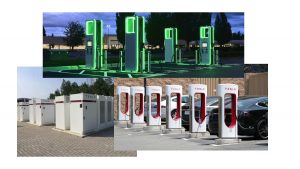
Image Sources: https://www.pv-magazine.com/2019/07/30/megapack-marks-teslas-new-play-for-utility-scale-storage/, https://media.electrifyamerica.com, https://www.autoblog.com/2019/05/25/tesla-supercharger-limit-80-percent-charging/







